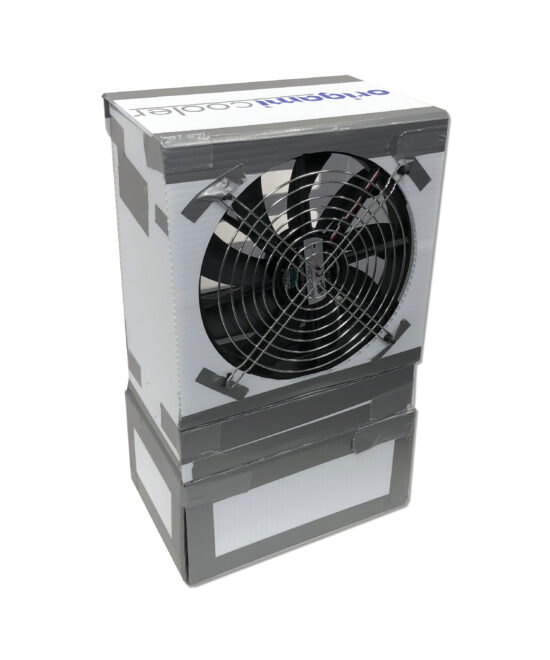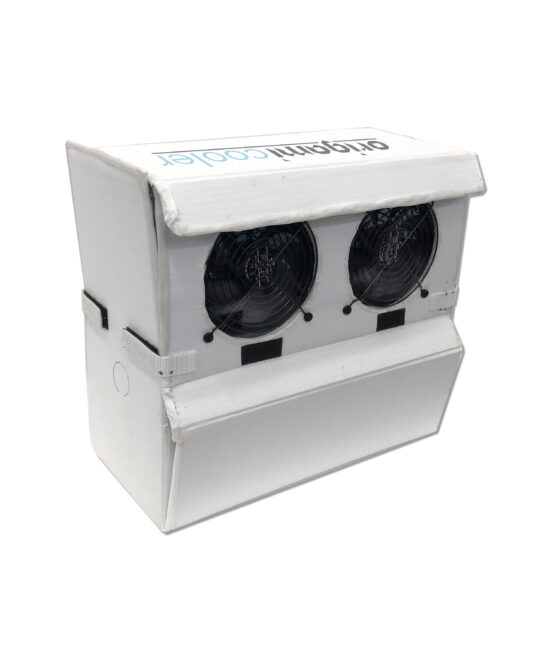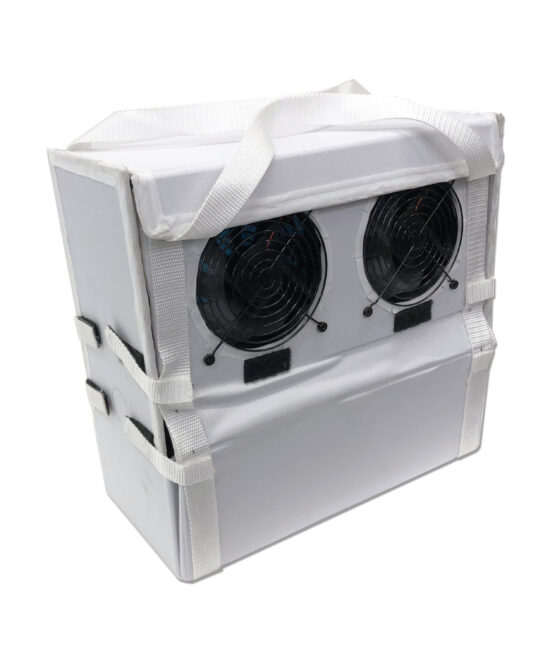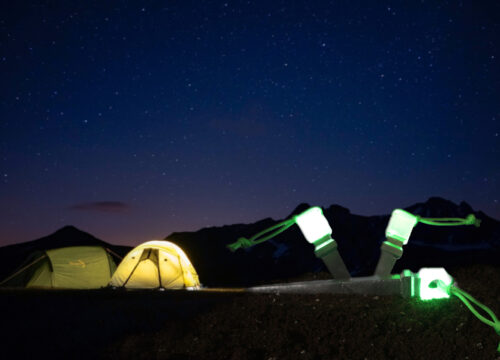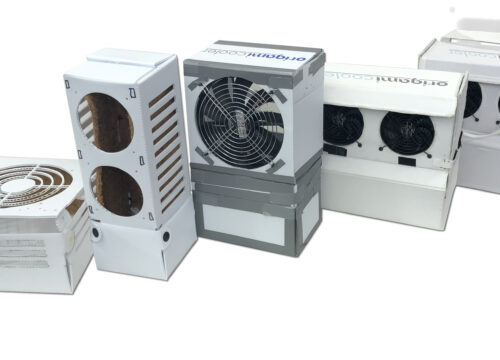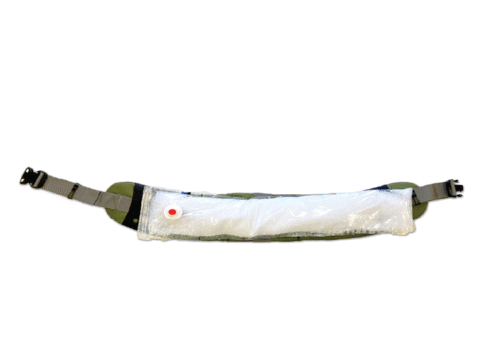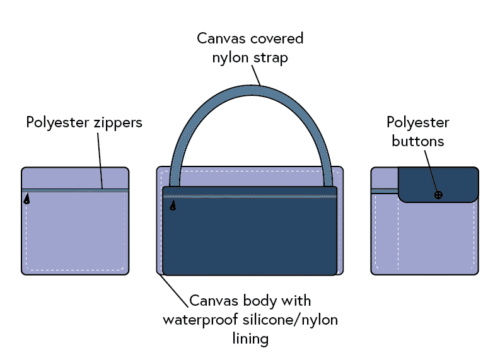Collapsible Evaporative Cooling for Communities Without Infrastructure
Add Image Here** Hero image showing the fully deployed origami cooler in use – perhaps in a humanitarian context or remote location, demonstrating its cooling effect
Project Overview
Challenge: Design an accessible, infrastructure-independent cooling solution for communities and situations where traditional air conditioning is unavailable or unaffordable
Solution: A collapsible, solar-powered evaporative cooler inspired by origami folding principles that operates using only water and sunlight
Role: Product Designer & Social Impact Researcher (building upon initial concept collaboration)
Timeline: [Add project duration]
Impact Focus: Humanitarian relief, climate adaptation, sustainable technology
Tools: [List design software, prototyping materials, testing equipment]
The Global Challenge
Climate change is intensifying heat waves worldwide, yet billions of people lack access to cooling solutions. Traditional air conditioning requires reliable electricity infrastructure and significant financial resources – luxuries unavailable to many of the world’s most vulnerable populations.
Add Image Here** Infographic showing global statistics on heat-related deaths, populations without electricity access, and climate change temperature projections
The Scale of Need:
- 1.1 billion people globally lack access to cooling when they need it most
- Heat-related deaths are projected to increase 5x by 2050
- Traditional AC units consume 20% of global electricity and contribute to climate change
- Rural and displaced communities often have no cooling options during extreme weather
Add Image Here** Photos showing heat-affected communities, refugee camps, or rural areas where traditional cooling is unavailable
This project began when my father identified the core challenge: how could we create effective cooling for places where electrical infrastructure simply doesn’t exist? Building on his initial concept, I saw an opportunity to develop a solution that could serve both outdoor enthusiasts and communities facing climate vulnerability.
Understanding User Needs
To design an effective solution, I researched diverse use cases from recreational camping to humanitarian crisis response, focusing on contexts where traditional cooling is impossible.
Add Image Here** Research documentation – interviews, field visits, or correspondence with humanitarian organizations
Primary User Groups:
- Humanitarian Organizations: Need portable cooling for medical facilities, refugee camps, and emergency shelters
- Rural Communities: Require affordable cooling solutions independent of electrical grid
- Off-Grid Enthusiasts: Campers, researchers, and remote workers seeking sustainable comfort
- Climate Adaptation Programs: Communities preparing for increased heat events
Key Requirements Identified:
- Operates without electrical infrastructure
- Transportable by individuals or small teams
- Affordable for resource-constrained users
- Uses locally available materials (water)
- Environmentally sustainable operation
- Simple setup and maintenance
Add Image Here** User journey maps or personas showing different use case scenarios
Technical Research & Constraints
Evaporative cooling offers the most viable path for infrastructure-independent climate control, but existing solutions are either too large, expensive, or power-hungry for our target applications.
Add Image Here** Technical diagrams explaining evaporative cooling principles and efficiency in different climates
Evaporative Cooling Advantages:
- Uses 75% less energy than traditional AC
- Effective in dry climates (where many vulnerable populations live)
- Simple mechanical operation with few failure points
- Uses water instead of harmful refrigerants
Design Constraints:
- Must pack small for transport (humanitarian logistics)
- Limited power budget (solar panel constraints)
- Cost target under $100 for accessibility
- Durable enough for harsh environments
- Repairable with basic tools and materials
Add Image Here** Comparison analysis of existing cooling solutions, their power requirements, and cost barriers
Concept Development: The Origami Approach
The breakthrough came from studying origami folding patterns. What if a cooling system could fold flat for transport but expand into a larger, more effective form when deployed?
Add Image Here** Origami folding pattern studies and initial concept sketches showing transformation from flat to 3D form
Design Inspiration:
- Origami tessellations for efficient flat-pack storage
- Honeycomb structures for maximum surface area with minimal material
- Biomimicry from desert plants that maximize cooling surface area
Core Innovation: The folding design increases the effective cooling surface area by 400% when deployed while maintaining a pack size smaller than a laptop when collapsed.
Add Image Here** Early prototypes showing the folding mechanism and size comparison between folded and deployed states
Integrated Systems:
- Solar panel charges internal battery during daylight hours
- Water reservoir with gravity-fed distribution system
- Variable-speed fan optimized for low power consumption
- Evaporative media that maximizes cooling while minimizing water usage
Iterative Design & Prototyping
Through multiple design iterations, I refined the folding mechanism, optimized the airflow patterns, and tested different materials for durability and effectiveness.
Add Image Here** Progression of prototypes showing design evolution and improvements
Prototype Evolution:
- Cardboard concept models – Testing basic folding principles
- 3D printed components – Refining mechanical connections
- Mixed-material prototypes – Testing real-world durability
- Field-ready units – Full system integration and testing
Add Image Here** CAD renderings or technical drawings showing internal component layout and airflow paths
Material Selection:
- Ripstop nylon fabric for the main body (lightweight, durable, water-resistant)
- Recycled plastic framework for structural components
- Cellulose cooling pads for high efficiency evaporation
- Integrated solar panel with battery management system
Add Image Here** Material testing photos showing durability tests, water resistance, and performance comparisons
Performance Testing & Validation
Rigorous testing validated both the cooling effectiveness and the humanitarian viability of the design across different climates and use scenarios.
Add Image Here** Field testing photos showing the cooler in various environments – desert, refugee camp simulation, rural community, etc.
Testing Methodology:
- Climate chamber testing across temperature and humidity ranges
- 72-hour continuous operation endurance tests
- User experience testing with non-technical operators
- Transportation durability testing
- Cost analysis for manufacturing and distribution
Performance Results:
- Temperature reduction: 15-25°F decrease in ambient temperature
- Coverage area: Effective cooling for 100-150 sq ft space
- Water efficiency: 8-12 hours of operation per gallon
- Power consumption: 24-hour operation on 6 hours of solar charging
- Setup time: Less than 10 minutes from packed to operational
Add Image Here** Data visualizations showing temperature reduction over time, power consumption graphs, and user satisfaction scores
Social Impact & Distribution Strategy
Beyond the technical solution, this project required considering how such technology could reach the communities that need it most.
Add Image Here** Partnership meetings or presentations to humanitarian organizations
Distribution Partnerships:
- Collaboration with international relief organizations
- Partnership discussions with renewable energy NGOs
- Pilot program proposals for climate adaptation initiatives
- Open-source documentation for local manufacturing
Economic Model:
- Tiered pricing: market rate for recreational users subsidizes humanitarian distribution
- Local assembly programs creating employment in target communities
- Maintenance training programs building local technical capacity
Add Image Here** Infographic showing the social enterprise model and community impact projections
Measured Impact Potential:
- Each unit could serve 10-15 people during heat emergencies
- Estimated production cost allows 3:1 subsidization ratio
- Local assembly could create 50+ jobs per 1,000 units produced
- Technology transfer enables community self-sufficiency
Final Design Solution
The Origami Cooler represents a convergence of thoughtful engineering, social impact design, and humanitarian logistics.
Add Image Here** Professional product photography showing the final design in both folded and deployed configurations
Key Features:
- Ultra-portable: Folds to 24″ x 18″ x 4″ for easy transport
- Solar-powered: Operates 24 hours on 6 hours of sunlight
- Water-efficient: Provides cooling for 8-12 hours per gallon
- Quick deployment: Sets up in under 10 minutes
- Durable construction: Designed for 3+ years of regular use
- Locally repairable: Common materials and simple mechanical design
Add Image Here** Exploded view diagram showing all components and assembly process
Technical Specifications:
- Cooling capacity: 2,000 BTU/hour equivalent
- Power consumption: 25W average
- Water tank capacity: 2 gallons
- Deployed dimensions: 4′ x 3′ x 2.5′
- Weight: 15 lbs complete system
- Operating range: 60-120°F ambient temperature
Real-World Impact & Future Vision
This project demonstrates how thoughtful design can address climate adaptation challenges while remaining economically viable and technically robust.
Add Image Here** Photos or renderings showing the cooler deployed in various humanitarian contexts
Pilot Deployments:
- Partnership with [Humanitarian Organization] for refugee camp testing
- Collaboration with rural healthcare clinics for medical equipment cooling
- Distribution through disaster relief organizations for emergency response
Environmental Benefits:
- 90% lower carbon footprint than traditional AC
- Uses renewable energy exclusively
- Zero harmful refrigerants
- Designed for circular economy principles
Add Image Here** Lifecycle assessment infographic showing environmental impact comparison
Scaling Potential: The origami folding principle opens possibilities for other humanitarian technologies – from solar stills to emergency shelters – that need to be compact for logistics but effective when deployed.
Learning & Reflection
This project taught me that the most impactful design solutions often emerge from constraints rather than unlimited resources. Working within the limitations of off-grid power, water scarcity, and humanitarian logistics forced creative innovations that wouldn’t have emerged otherwise.
Add Image Here** Behind-the-scenes photos of the design process, collaboration, or field testing
Key Lessons:
- Collaboration amplifies impact: Building on my father’s initial concept allowed us to achieve more together than either could alone
- Constraint-driven innovation: Limitations often spark the most creative solutions
- User-centered design scales: Solutions that work for extreme use cases often excel in mainstream applications
- Technology transfer matters: The most elegant designs are meaningless if they can’t reach those who need them
Future Development:
- Exploring larger-scale units for community cooling centers
- Investigating integration with existing humanitarian supply chains
- Developing educational programs for climate adaptation technology
- Open-sourcing designs for global manufacturing adaptation
Add Image Here** Vision board or future applications showing potential evolution of the technology
This project represents more than a cooling solution – it’s a proof of concept that thoughtful design can help communities adapt to our changing climate while building resilience and self-sufficiency.
Project Recognition
[Add any awards, press coverage, or recognition the project has received]
Add Image Here** Photos from presentations, awards ceremonies, or media coverage if applicable
Join the community to insurance for the life and together make the life best. We providing the best insurance policy to customers.
Safety first always
Magna aliqa enim sed ipsum nisi ainy veniam quis.
Trusted travel guide
Magna aliqa enim sed ipsum nisi ainy veniam quis.

